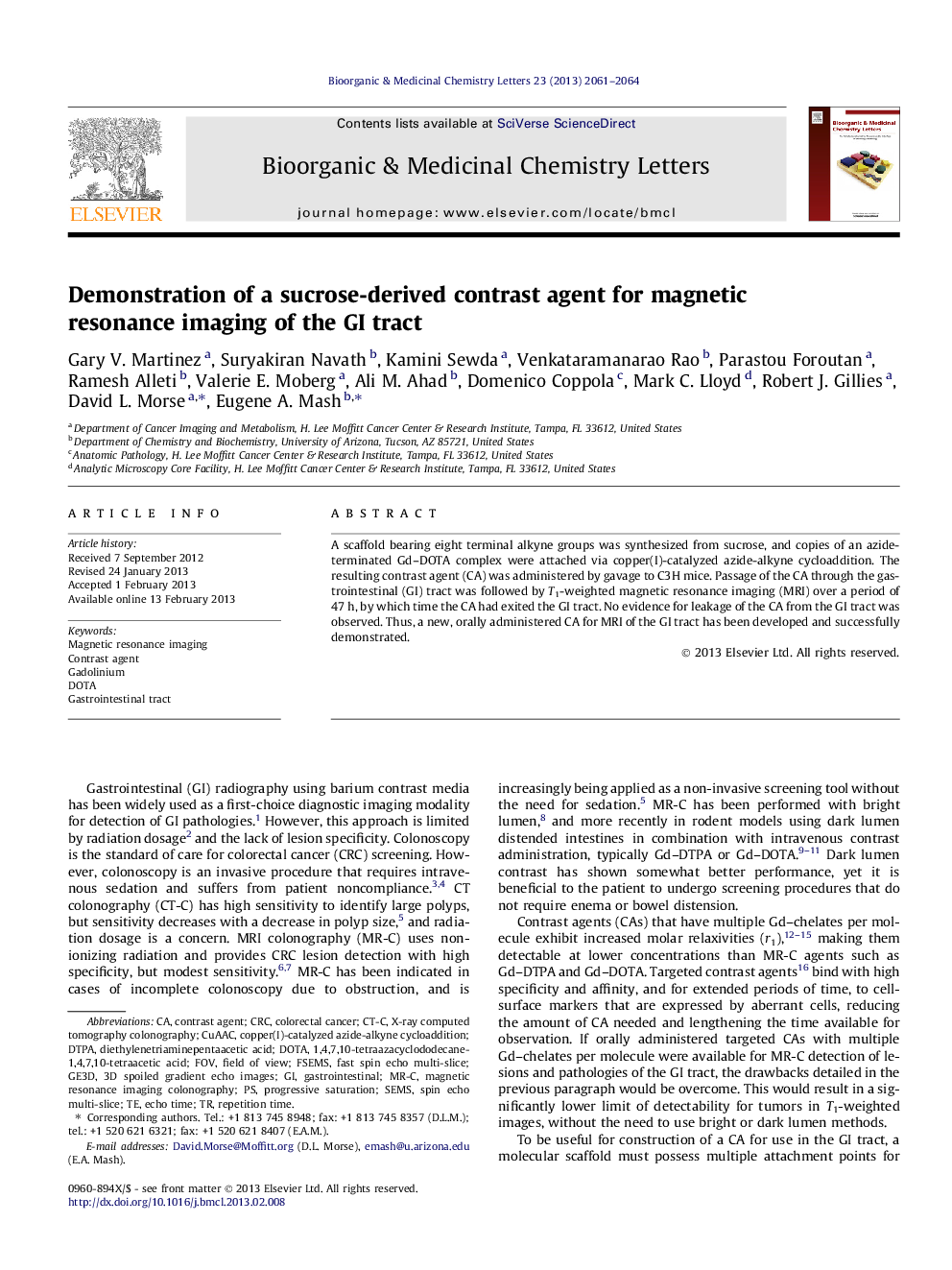| Article ID | Journal | Published Year | Pages | File Type |
|---|---|---|---|---|
| 10587719 | Bioorganic & Medicinal Chemistry Letters | 2013 | 4 Pages |
Abstract
A scaffold bearing eight terminal alkyne groups was synthesized from sucrose, and copies of an azide-terminated Gd-DOTA complex were attached via copper(I)-catalyzed azide-alkyne cycloaddition. The resulting contrast agent (CA) was administered by gavage to C3H mice. Passage of the CA through the gastrointestinal (GI) tract was followed by T1-weighted magnetic resonance imaging (MRI) over a period of 47Â h, by which time the CA had exited the GI tract. No evidence for leakage of the CA from the GI tract was observed. Thus, a new, orally administered CA for MRI of the GI tract has been developed and successfully demonstrated.
Keywords
DTPACopper(I)-catalyzed azide-alkyne cycloadditionCuAACDOTASEMSFOV1,4,7,10-tetraazacyclododecane-1,4,7,10-tetraacetic acidProgressive saturationMagnetic resonance imagingGastrointestinal tractGastrointestinalDiethylenetriaminepentaacetic acidecho timeRepetition timeColorectal cancerContrast agentField of viewCRCGadolinium
Related Topics
Physical Sciences and Engineering
Chemistry
Organic Chemistry
Authors
Gary V. Martinez, Suryakiran Navath, Kamini Sewda, Venkataramanarao Rao, Parastou Foroutan, Ramesh Alleti, Valerie E. Moberg, Ali M. Ahad, Domenico Coppola, Mark C. Lloyd, Robert J. Gillies, David L. Morse, Eugene A. Mash,
